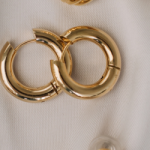Are you ready to discover the trade secrets of modern yet timeless interior design? Come along on an insightful journey as we explore the fundamentals of modern design, reveal its exploding appeal, and break it down. Not only that, but we’ll also explain the differences between modern and contemporary design, provide you with tips on how to keep ahead of the curve in design, and highlight the bright futures in interior design as a profession.
Prepare to explore the fascinating realm of modern interior design, where creativity and classic elegance collide!
What is Contemporary Style in Interior Design?
Contemporary interior design encompasses a dynamic blend of styles, materials, and aesthetics that reflect the present moment. It places a strong emphasis on smooth surfaces, clear lines, and the tasteful blending of form and function. Modern design, in contrast to traditional design, which could follow certain historical eras, welcomes innovation and frequently uses cutting-edge materials and technologies.
Contemporary interior design isn’t just about following the latest trends; it’s about creating spaces that resonate with the spirit of the times. Modern interior design is about making rooms that speak to the spirit of the times, not merely about chasing the newest trends. This fashion encourages exploration and self-expression by embracing differences and celebrating individuality. The mixture of new and old, traditional and modern, is a common feature of contemporary interior design, creating surroundings that are visually interesting and dynamic. In addition, modern design places a high importance on environmental awareness and sustainability, with a growing focus on eco-friendly materials and energy-saving techniques. Inspiring and enthralling enthusiasts worldwide, contemporary style stays at the forefront of the design industry by continuously changing and adapting to societal developments and technological advancements.
Why is it trending?
The versatility and ageless quality of contemporary design is what makes it so appealing. It constantly changes to take into account new technical developments and cultural sensibilities by rejecting strict restrictions and embracing experimentation. Because of its emphasis on functionality, simplicity, and minimalism—all of which are in line with modern lifestyles—it is a popular option among both designers and homeowners.
Furthermore, modern design provides a flexible medium for individuality and ingenuity. It inspires people to bring their individuality and distinctive preferences into their living areas, creating customized settings that are cozy and contemporary. Contemporary design is flexible enough to accommodate shifting tastes and developing trends with ease, enabling smooth transitions between various styles and aesthetics. Its simple design also encourages clutter-free living and a sense of calm, creating a soothing heaven in the middle of the bustle of modern life. The appeal of contemporary design only grows stronger as society adopts more concepts of sustainability, creativity, and simplicity, solidifying its place as a classic and long-lasting interior design style.
Elements of Contemporary Style
A few essential components come together in contemporary interior design to produce visually stunning and highly functional homes. Clean lines, minimalist design, and a seamless blend of form and function are paramount in this dynamic domain. But beneath the surface, there’s more to learn. Come along as we explore the essential components of contemporary style and investigate how they interact to create contemporary living environments. The term “contemporary interior design characteristics” encapsulates the defining traits and features that characterize modern interior design styles and aesthetics.
Additionally, the success and evolution of contemporary interior design owes much to the creativity and innovation of contemporary interior designers who continually push the boundaries of the field with their unique visions and perspectives.
1. Clean Lines
In contemporary interior design, sharp, straight lines are more than just a stylistic choice; they serve as the foundation for the aesthetic ethos of the movement. A sense of sleek sophistication and design clarity permeates contemporary rooms, which embrace clean lines in furniture and architectural elements. The room’s overall feeling of modern beauty and refinement is enhanced by the exact lines that provide visual order and cohesion.
2. Neutral Color Palettes
The muted colors seen in modern interior design are essential for creating a peaceful and harmonious atmosphere. This color palette is dominated by tones like white, beige, and gray, which provide a flexible backdrop for other design components. Because of their timeless quality and subtle luxury, these neutral colors let the furniture and artwork shine. Additionally, they provide homeowners the freedom to play around with color or texture accents to add visual interest without overpowering the room.
3. Open Spaces
The term “space” in modern interior design refers to more than just floor area; it also refers to an open and connected mindset. Modern interiors prioritize space, which encourages fluidity and freedom of movement. The distinction between indoor and outdoor spaces is blurred by the abundance of natural light that streams in through large windows and unimpeded sightlines. This emphasis on transparency not only improves the aesthetic appeal overall but also encourages relaxation and well-being.
4. Minimalism
The minimalist concept, which promotes utility, simplicity, and purposefulness, is the foundation of modern design. The room is meticulously edited to remove extraneous pieces, retaining only those that are crucial to its overall usefulness and aesthetic coherence. Modern homes are serene and well-organized because they minimize extraneous embellishments and ornamental accents. This minimalist style not only produces a visually beautiful space, but also encourages intentionality and mindfulness in day-to-day living.
5. Innovative Materials
In its pursuit of sustainability and creativity, contemporary design embraces a wide variety of materials, from time-honored favorites to cutting-edge discoveries. Because of their sleek and modern appearance, concrete, steel, and glass are frequently chosen because they add an element of industrial flair to modern environments. Furthermore, eco-friendly solutions that fit with the concept of environmental responsibility—like reclaimed wood and sustainable textiles—are becoming more and more popular. Modern interior designs that use these cutting-edge materials not only look great but also help create a more sustainable future.
Comparison between Modern and Contemporary Design
Before diving into the nuances of modern versus contemporary design, it’s essential to understand the distinct characteristics that define each style. While both modern and contemporary designs share some similarities, they also exhibit notable differences in terms of aesthetics, materials, and overall philosophy. By exploring these differences, we can gain a deeper appreciation for the evolution of design principles and their impact on today’s interiors. Let’s unravel the intricacies of modern and contemporary design and discover what sets them apart.
1. Time Period
Modern design, which dates back to the early to mid-20th century, is a reflection of the prevailing design ideas of the time. Whereas, modern sensibility and design trends are reflected in contemporary design, which has its roots in the present.
2. Aesthetic
With a hint of retro features from the mid-century modern era, modern design is distinguished by its sleek and minimalist style. On the other hand, Dynamic and eclectic, contemporary design embraces current trends while allowing for individual expression and experimentation.
3. Materials
For Modern Designs, there’s an emphasis on industrial materials such as steel and concrete, contributing to the clean and streamlined look of modern interiors. Contemporary design incorporates a diverse range of materials, including eco-friendly options, to create visually stimulating and environmentally conscious spaces.
4. Color Palette
Modern design is built on neutral hues that are sometimes broken up by striking accents to create visual appeal. Whereas the color scheme used in contemporary design is generally neutral with discreet splashes of color, making it flexible enough to accommodate a wide range of preferences and likes.
5. Furniture
Modern design is characterized by its clean lines and famous mid-century objects, which give interior spaces a timeless appeal. Contemporary interiors feature a mix of vintage and modern furnishings, creating an eclectic yet cohesive look that reflects the homeowner’s personal style.
6. Technology Integration
In comparison to current design, modern design tends to integrate technology more limitedly, even though it may still contain some features. Whereas the latest innovations in gadgetry and smart home technologies are effortlessly integrated into contemporary design to improve convenience and functionality.
As we conclude our exploration of modern contemporary interior design styles, it’s evident that while both styles offer distinct aesthetic expressions, they also reflect the evolving tastes and lifestyles of their respective eras. With this, we can conclude that in the world of design, there’s always room for creativity, experimentation, and the pursuit of spaces that truly feel like home.
How to be ahead of the Design trend?
In the world of modern design, being ahead of the curve demands having a good sense of what’s hot, being prepared to try new things, and being dedicated to lifelong learning. To develop a distinctive design viewpoint, interact with design periodicals, go to industry gatherings, and look for inspiration from a variety of sources. Moreover, the design process can be streamlined by using digital tools and software, which promotes increased creativity and productivity.
In addition, networking with other designers and industry professionals can offer priceless perspectives and joint venture opportunities, promoting development and exposure to fresh concepts. In order to create places that truly resonate with contemporary sensibilities, staying ahead of the design trend ultimately demands a combination of curiosity, adaptability, and a willingness to push the bounds of convention.
Is Interior Designing a good career choice?
A career in interior design offers a fulfilling blend of creativity, problem-solving, and collaboration. With the ever-growing demand for aesthetically pleasing and functional spaces, interior designers play a pivotal role in shaping environments across residential, commercial, and hospitality sectors.
In addition to the creative aspects, interior design also presents abundant opportunities for professional growth and financial stability. As the global population continues to urbanize and the real estate market expands, the demand for skilled interior designers is expected to soar. Moreover, the flexibility of the profession allows designers to specialize in niche areas such as sustainable design, healthcare facilities, or luxury residences, catering to diverse clientele and expanding their marketability. All things considered, a career in interior design is a very gratifying and promising option for people who are passionate about using design to shape the environment around them. AAFT Online’s 1-year Diploma in Interior Design provides a comprehensive foundation for aspiring designers, covering key principles, techniques, and industry insights. Through a blend of theoretical
knowledge and practical projects, students gain hands-on experience and mentorship from seasoned professionals, preparing them for successful careers in the dynamic field of interior design.
Conclusion
In conclusion, the appealing blend of current innovation and timeless elegance is provided by the contemporary classic interior design style. Its emphasis on simplicity and functionality ensures continuing relevance and its fluidity and adaptability make it a recurrent favorite among design enthusiasts. Explore the possibilities, unleash your creativity, and embark on a journey to transform spaces with the magic of contemporary interior design!
























